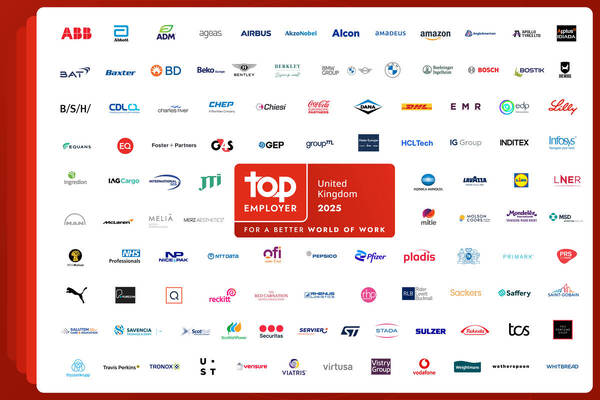Managing the complexities of a global-first company
Sponsored by OmnipresentBecoming a global-first company may be the key to finding success. But what’s the difference between competing globally and being global-first?

Becoming a global-first company may be the key to helping businesses withstand the upheavals endured in the modern world, such as societal shifts, rapid advancements in technology, political volatility and public health crises. We only need to look at tech giants for evidence: unlike the high street shops that took a heavy hit during the pandemic, global companies thrived, seeing record-breaking profits.
Companies with an online presence are already competing in a global market. Most importantly, their competitors are competing in the same environment and are likely already thinking global-first.
But what is the difference between competing globally and being a global-first company?
A company with a global-first mindset views the whole world as a commercial opportunity. It looks to tap into a global talent pool, accessing potential employees that extend beyond their home country. These companies understand that serving the global market requires teams placed throughout the world to facilitate a deeper understanding of local customer behaviour and needs.
What’s more with a broader talent pool comes greater diversity – of culture, experience and thought. Instead of 10 people on a team who all share the same background from the same place or lived experience, a fully remote, distributed team can reflect the global spread of clients and customers. This is the global-first reality at Omnipresent, a global employment partner, that has grown into a team of more than 230 people in 42 countries and regions in just over two years.
While a globally distributed group of talent may sound like perfection for companies wanting to stay globally competitive, managing a global workforce can quickly become a logistical nightmare, especially for small- and medium-sized companies. There are serious challenges and complexities – both cultural and practical – that come with operating in an international, asynchronous environment.
Building a global team is not a walk in the park. What works in a company’s home country may not be feasible in other regions. Each market needs to be treated as its own special entity, from sales to marketing, to product and service delivery. This global-first approach should be woven throughout every aspect of the organisation.
Communication leads the way
Good leaders put themselves in the shoes of the person furthest away from the company’s centre, which means leadership teams need to be deliberate about their communications. The quality of the experience for people furthest away from the company’s centre of gravity can be far from perfect.
Communication is every company’s heartbeat. As your company becomes more global and your workforce more distributed, it’s vital to have a well-tuned, consistent internal system for sharing information. This helps ensure everyone in the company is aware of what is happening in the different regions and functions of the business. Making an extra effort to ensure all team members are getting the same access to information, regardless of their location, can be achieved by setting up shared cloud-based communication channels and agreeing on how they are used companywide.
Building a global team also comes with complexity of managing people across several time zones. How do you organise a company-wide, all-hands meeting? Do you ask people to work outside the normal working day, or do you hold three different meetings?
Being global-first means finding solutions that keep the global team and their needs in mind. Our solution is to hold one meeting on Wednesdays, alternating weekly between mornings and afternoons UK time. This allows our colleagues in Asia and America to join live during a traditional work day at least every other week. Having as many team members as possible on the call allows them to ask questions and get the same information in real-time. For those unable to attend the live meeting, recording software helps bridge any communication gaps.
Navigating cultural differences
A global workforce is a multi-cultural workforce, and with that comes the challenge of navigating different social norms and expectations. Leaders need to ensure that everyone in the company accepts these differences, and understand how to operate cross-culturally. By instilling these values into the everyday, companies can help create a solid company culture.
It takes communication and a commitment to create a corporate ethos that appreciates both the similarities and differences in culture across a workforce. It’s important to make this a priority as a global-first company, and incorporate it into the organisation’s values.
Get ready for complexity
Being global-first is also supercharged with administrative and bureaucratic complexities, especially in the areas of HR, legal, payroll, operations and finance.
For example, companies need to consider salary benchmarking across cities, countries and/or regions. What type of compensation should someone in Lagos, Nigeria, receive compared to someone living in New York, US? Should employees be paid the same rate no matter where they live, or should market rates be applied? How do companies manage different currencies when paying salaries? These are all crucial questions global-first businesses need to answer.
Companies also need to consider benefits, holiday pay, social contributions, healthcare – and how they may differ from region to region. For example, US companies typically offer employer-funded healthcare, but what happens in Europe, where government-funded healthcare is standard? And what social contributions or taxes should employers pay in Singapore versus Chile? How do you budget for the different corporate rates in different countries?
Existing solutions that have traditionally helped multinational companies operate globally and geared towards just that, big corporates. They often do not work for new, smaller companies at the beginning of their global expansion journey. These companies need solutions that are a lot more cost-effective, agile and which leverage technology-enabled products.
Regardless of location, a global-first mindset allows people to build great things together and speeds up innovation. By recognising the global challenges and complexities, and putting in place the right practices, tools and systems, companies can help alleviate the pain and friction, allowing them to benefit from a global talent pool and a global market.
To understand how international businesses are embracing new work practices with global talent, download the Work From Anywhere report at Omnipresent.com.
By Matthew Wilson, Co-founder and Co-CEO, Omnipresent

Business Reporter Team
Related Articles
Most Viewed
Winston House, 3rd Floor, Units 306-309, 2-4 Dollis Park, London, N3 1HF
23-29 Hendon Lane, London, N3 1RT
020 8349 4363
© 2025, Lyonsdown Limited. Business Reporter® is a registered trademark of Lyonsdown Ltd. VAT registration number: 830519543





